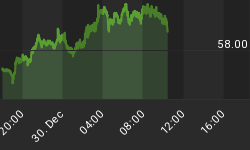Have metal prices and the prices of other commodities such as oil outrun the underlying fundamentals? The significant strength of the US dollar since December last year has capped rises in commodity prices. However, metal prices continue to be driven largely by Chinese demand, with China's manufacturing PMI for new export orders and total new orders leading metal prices.
Although still indicating expansion, the PMI for new export orders had stabilised at the higher level, but weakened recently, probably as a result of the Chinese New Year holiday. It remains substantially below the highs achieved before March 2008, though. The manufacturing PMI for new orders approached previous peaks before the holiday affected the readings.
In the near term, it is likely that the Chinese authorities' drive to cool the economy - through various monetary measures such as interest rate hikes and increasing bank reserve requirements - is likely to lead to a softer but still expanding PMI for new orders. Stock building as measured by China's manufacturing PMI for stocks of major inputs is an important factor in the metals market. Although the purchasing managers were quite price sensitive up to May last year - varying their stocks according to price changes - the sensitivity has been absent since metal prices bottomed. The recent austerity measures implemented by the authorities are likely to lead to some excess inventories in China finding their way back to the marketplace and the purchasing managers again becoming more price sensitive. The Baltic Dry Index - a measure of global bulk freight rates - indicates that China's manufacturing PMI picked up in March.
The risks of investing in commodities are increasing as we move forward. The metal markets currently smack of speculation and manipulation. Metal stocks on the London Metal Exchange are currently at levels similar to those at the height of the global liquidity crisis. No wonder the Commodities Futures Trading Commission (CFTC) has called on Congress to impose hard-cap position limits on metals to address excessive concentrations of positions that could lead to the manipulation of metal prices.
The termination of China's accommodative monetary strategy, combined with the public debt malaise in the eurozone, is likely to reduce the speculative demand for industrial metals, especially in the second half of this year. Commodity prices could fall hard and fast should the double-dip scenario for the Western World become a reality, but a weaker US dollar may reduce the pain.
The trading range chart below shows that the Reuters/Jeffries CRB Index (267.3) has been trading sideways since October and is at the moment neutral to somewhat oversold, being positioned between one (yellow shading) and two (blue) standard deviations below its 50-day moving average. Key levels to watch are the 200-day line - a mere 1 point away - and the February lows (258.6), levels that must hold in order for the cyclical bull market to remain intact. As always, I will be keeping a close eye on the situation, especially the new Chinese PMI report being released later this week.

Source: Plexus Asset Management (based on data from I-Net Bridge).
Did you enjoy this post? If so, click here to subscribe to updates to Investment Postcards from Cape Town by e-mail.















